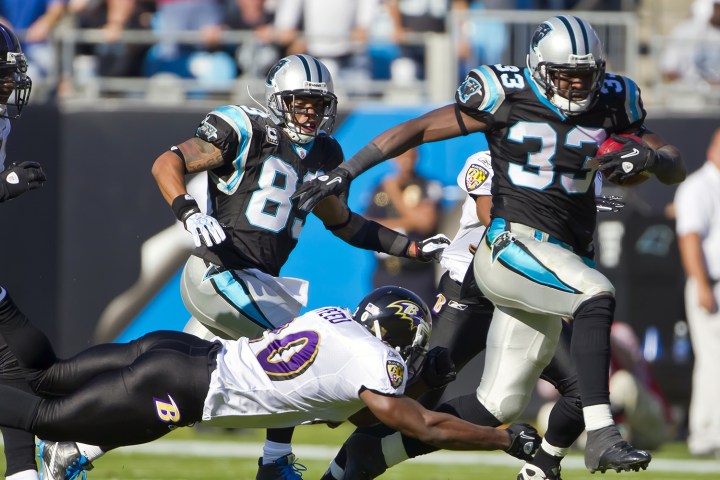
With plenty of attention being paid to injuries during the athletes’ careers, too often the residual effects of the contact sport are ignored, or worse yet, remain entirely unrecognized. But no longer — as per a recent study from the Department of Veterans Affairs and Boston University, 87 out of 91 former NFL players tested positive for degenerative brain disease chronic traumatic encephalopathy (CTE).
A career in professional football clearly raises the odds of contracting this debilitating disease, whose side effects include memory loss, impaired judgment, depression, and, eventually, progressive dementia. Unfortunately, CTE can only be diagnosed after death. Those suffering from the disease develop an abnormal amount of a protein called tau, which is capable of disabling neural pathways that are responsible for functions like memory, judgment, and fear.
The 91 brains, all of which were donated posthumously to science, were already suspected of showing signs of CTE, which certainly skewed the results of the data set. Still, these findings come as no surprise to scientists, who have long noted the prevalence of CTE among NFL athletes.
“People think that we’re blowing this out of proportion, that this is a very rare disease and that we’re sensationalizing it,” Ann McKee, chief of neuropathology at the VA Boston Healthcare System, told PBS, “My response is that, where I sit, this is a very real disease.”
In total, the latest study on the association between CTE and football examined 165 brains of former players, some of whom played only in high school, and others who made it into the big leagues. But evidence of CTE did not discriminate against success — of the 165 brains, 131 showed evidence of CTE, for a grand total of 79.4 percent. In the NFL, the frequency was higher still at 96 percent.
The NFL, which has repeatedly come under fire for its failure to address the long-term effects of injuries sustained during a player’s tenure in the league, recently settled a lawsuit brought by thousands of ex-players that allows for up to $5 million per retired athlete for serious medical ailments derived from repeated head trauma.
“We are dedicated to making football safer and continue to take steps to protect players, including rule changes, advanced sideline technology and expanded medical resources,” the league asserted in a statement responding to the latest findings. “We continue to make significant investments in independent research through our gifts to Boston University, the (National Institutes of Health) and other efforts to accelerate the science and understanding of these issues.”
Already, the NFL estimates a reduction in concussions of between 28 and 35 percent since 2013, certainly an improvement, though still not a complete solution. But the league has promised to continue its efforts to keep players safe. NFL spokesman Brian McCarthy wrote in an email to the Associated Press, “We all know more about this issue than we did 10 or 20 years ago and will continue to learn as more research is conducted and discussed by the medical community. But we are not waiting to make the game and players safer. We have been and will continue to make improvements.”


